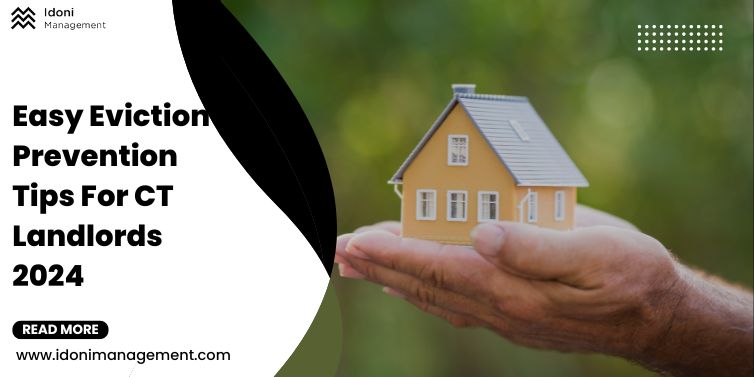Being a landlord in Connecticut comes with its perks, like earning extra income and providing great places for people to live. But, sometimes dealing with eviction can be tough. The eviction process in Connecticut can be particularly challenging due to its complex legal requirements, the potential for lengthy court proceedings, and the emotional stress involved in removing tenants. Additionally, it can cost a lot of time and money.
Do you wanna know what’s the good news? Evictions can be avoided. Preventing evictions can help you maintain a positive atmosphere but also avoid the stress and costs associated with the eviction process.
Here are some simple tips for landlords in Connecticut in 2024 to help keep evictions low. These tips are about staying on good terms with your tenants and making your job easier.
Understand the Eviction Law
First and foremost, familiarize yourself with Connecticut’s eviction laws. These laws are designed to protect landlords and tenants; knowing them thoroughly will help you manage your properties effectively and legally. Understanding Connecticut’s eviction laws is important for ensuring legal compliance and building fair relationships with tenants.
7 Steps to Minimize Eviction Risks for Connecticut Landlords
To avoid eviction stress in Connecticut, here are simpler and easier ways to keep your rentals running smoothly:
1. Screen Tenants Thoroughly
Effective tenant screening is an important factor in preventing evictions. By carefully evaluating potential tenants, landlords can significantly reduce the risk of future conflicts. Here’s how to conduct a thorough screening process:
- Credit History
A tenant’s credit history can tell you a lot about their financial responsibility. Look for patterns of late payments, significant debt, or other red flags. According to Experian, a good credit score is considered to be 700 or above, although you may decide on a threshold that makes sense for your property and location. As a tenant, you should know How to Get an Apartment With Bad Credit or No History.
- Criminal Background
A criminal background check can help ensure the safety and security of your property and its tenants. Connecticut law allows landlords to perform criminal background checks on prospective tenants, but it’s essential to comply with the Fair Credit Reporting Act (FCRA) and the Connecticut Fair Housing Act, ensuring that your screening practices are fair and non-discriminatory.
- Eviction History
Reviewing a tenant’s eviction history can reveal past housing-related issues. An eviction record doesn’t always disqualify a potential tenant, but it can prompt a discussion about what happened and whether the situation has changed. The Connecticut Judicial Branch provides resources for public records searches, which can be a starting point for this part of the screening.
- References from Previous Landlords
References from previous landlords can provide valuable insights into a tenant’s behavior, reliability in paying rent, and how they care for a property. Asking for references from the last two or three rentals can give you a well-rounded view of the tenant’s history.
2. Communicate Clearly and Often

Effective communication between landlords and tenants is important for maintaining a healthy rental relationship and preventing potential disputes that could lead to eviction. Here’s how to ensure communication lines remain open and productive:
Set Clear Expectations from the Start
Right from the beginning, make sure your tenants understand what is expected of them. This includes rent payment schedules, property care responsibilities, and adherence to any specific rules you have for your property. Clear guidelines help avoid misunderstandings later on.
- Rent Payment Schedules: Clarify the due date, acceptable payment methods, and any grace period or late fees. Providing a written payment policy can help eliminate any confusion.
- Property Care: Outline your expectations for property maintenance in the lease agreement. Specify the tenant’s responsibilities versus those you’ll handle as the landlord.
- Rules and Regulations: If you have specific rules regarding noise levels, guest policies, pet policies, or anything else pertinent to living on your property, make sure these are communicated and agreed upon in the lease.
Regular Check-Ins
Building a relationship with your tenants isn’t just about being friendly; it’s a strategic move to keep the lines of communication open. Schedule regular check-ins to see how they’re doing and if they have any concerns or needs regarding the property. These can be done through quarterly emails, calls, or even a quick text message, depending on the preference of both parties.
- Be Approachable: Let your tenants know they can come to you with any issues, no matter how small they might seem. An approachable landlord encourages tenants to report problems early, allowing for quicker resolutions.
- Proactive Problem Solving: When tenants do bring up issues, address them promptly. Showing that you’re responsive and care about their well-being can significantly enhance tenant satisfaction and loyalty.
3. Provide a Maintenance Schedule
Keeping your property in good condition not only satisfies your tenants but also encourages them to take better care of your property. Responsiveness to their request shows tenants that you value them and leads to 30% fewer tenant complaints and a higher rate of lease renewals.
Here’s how to implement an effective maintenance schedule:
- Preventive Maintenance Calendar: Create a yearly calendar that schedules all preventive maintenance tasks, such as HVAC inspections, gutter cleaning, and landscaping. Share this with tenants so they know when to expect maintenance activities.
- Responsive Repairs: Implement a system for tenants to easily report issues, either through an online portal or a dedicated phone line. Set clear expectations for response times, and strive to address urgent repairs within 24-48 hours.
- Seasonal Checks: Conduct seasonal inspections and maintenance to prevent weather-related damages. This includes checking for leaks before winter or ensuring the cooling systems are functional before summer.
4. Offer Flexible Payment Options
Life’s uncertainties can impact anyone, leading to unexpected financial challenges. By offering flexible payment solutions to tenants who are facing unexpected financial difficulties, you can help prevent evictions. Whether it’s adjusting payment schedules, allowing for partial payments, or temporarily reducing rent, flexibility can make a significant difference.
For example, a landlord might allow a tenant who has lost their job to make smaller, weekly payments instead of the usual monthly rent. Or, during a global crisis, a reduction in rent could be offered to all tenants for a few months to ease their financial burden.
This approach not only helps tenants during tough times but also builds loyalty and can ensure a stable rental income over time. Recent stats say that landlords who offer flexible payment options tend to experience lower eviction rates.
5. Know When to Negotiate
Not every lease violation needs to lead to eviction. If a tenant is generally reliable but commits a lease violation it’s often more beneficial to consider negotiating a solution that doesn’t involve eviction. This could involve payment plans, warnings, or other arrangements that address the issue without legal action.
Payment Plans
For tenants who are facing financial difficulties and are unable to pay rent on time, offering a payment plan can be a viable solution. This involves breaking down the owed amount into smaller, more manageable payments spread out over a specific period. It’s important to document any payment plan agreement in writing, specifying the amounts due and the dates.
Warnings
In cases of lease violations that don’t involve financial issues, such as noise complaints or unauthorized guests, issuing a warning can be an appropriate first step. A formal warning, either verbal or written, gives the tenant a clear understanding of the issue and an opportunity to correct their behavior without the need for further action.
Other Arrangements
Depending on the nature of the lease violation, there may be other creative solutions that can address the issue. For example, if a tenant has added an unauthorized pet to the apartment, a possible arrangement could involve the tenant agreeing to pay an additional pet deposit or monthly pet fee. Similarly, if the violation involves property damage, arrangements can be made for the tenant to cover the cost of repairs.
6. Legal Consultation
Before you decide to proceed with an eviction, consult with a legal professional who specializes in Connecticut landlord-tenant laws. They can offer guidance and ensure that any action you take is within your legal rights and follows the proper procedures.
7. Eviction as a Last Recourse
Finally, view eviction as a last recourse. It can be a long, costly process for both parties involved. Often, finding alternative solutions to disputes can be more beneficial in the long run, preserving your relationship with the tenant and keeping your rental income steady.
Conclusion
In short, as a Connecticut landlord, your path to fewer evictions in 2024 lies in understanding laws, choosing the right tenants, keeping communication lines open, maintaining your property, being flexible with payments, negotiating wisely, and seeking legal advice when necessary. Remember, strong relationships with your tenants and understanding their needs can significantly reduce the likelihood of eviction, making your rental business more stable and rewarding. By focusing on these key areas, you can enjoy smoother management and happier tenants.
Do you have questions or need help with your rental? We Idoni Management are here to make your experience smooth and stress-free. Contact us, and let’s talk about how we can assist you.





